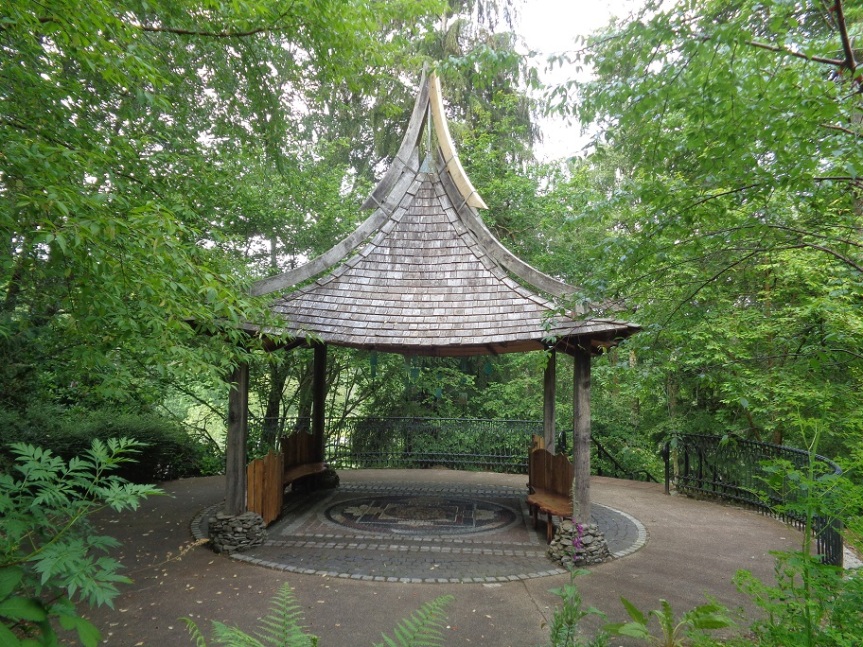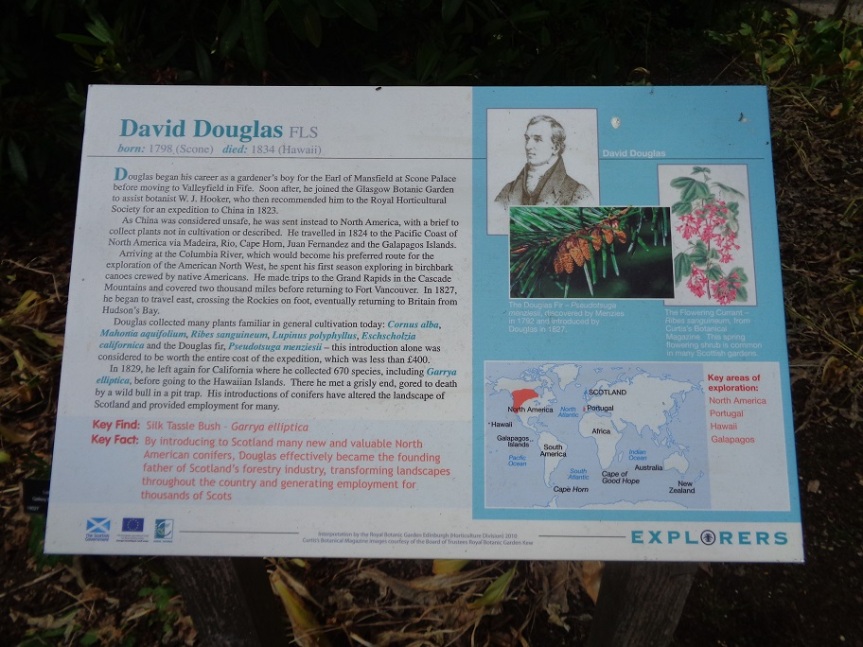
Earlier in the month I got round to making the trip to Pitlochry to visit the Explorers’ Garden there, and the David Douglas pavilion.
The entrance is based around the ships which would have carried the early explorers to their destinations – masts and sails, and a star-shaped platform marked out with compass points, and metal waves on the gate itself.
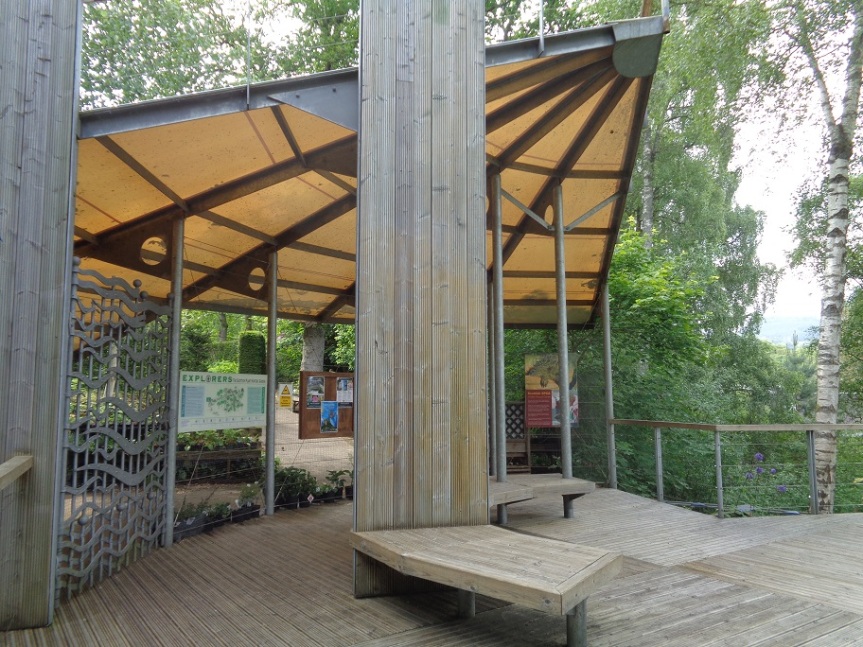

Inside, the garden is arranged geographically, with information boards about the collectors who were active in that area as you go round – many more than my few special friends, and a couple I hadn’t come across before.
It had been a cold spring, and sometimes there didn’t seem to be much more in bloom than rhododendrons – not many really recognisable discoveries.
South America comes early on, with Archibald Menzies, who also went to western North America with Vancouver, and the smallest monkey puzzle tree I’ve ever seen, although I suppose they have to start somewhere.
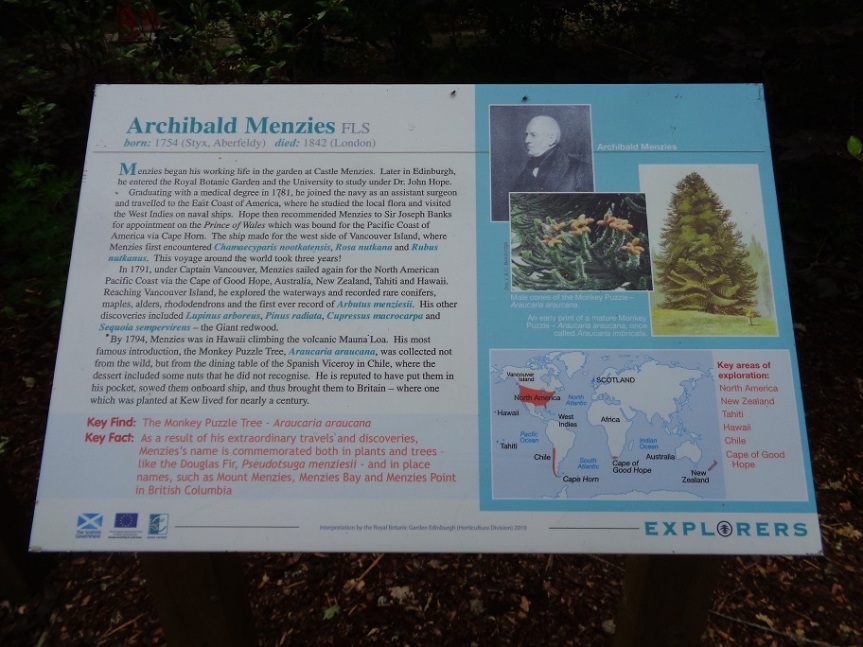
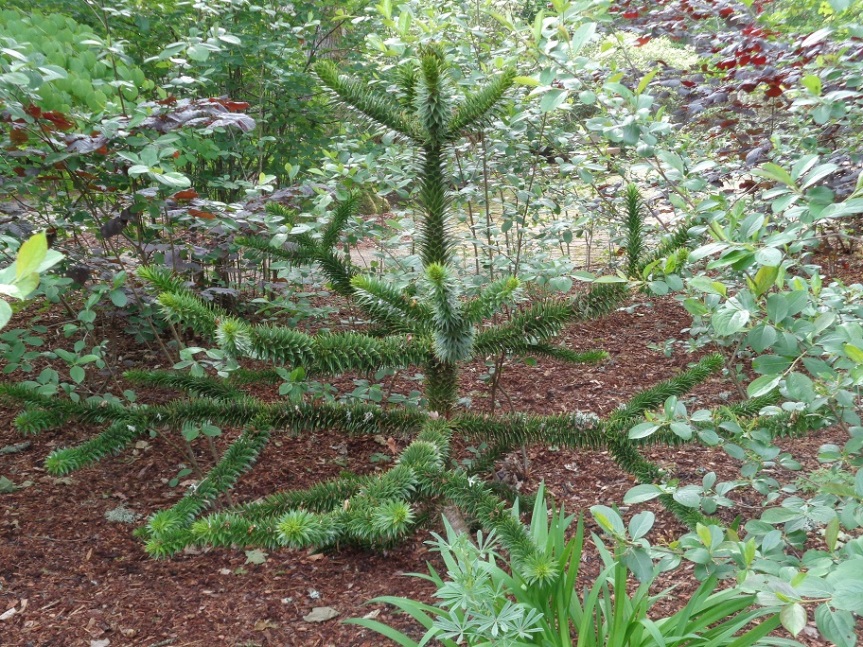
Beyond Australia and New Zealand – the south seemed to be sticking together – was South Africa, with Francis Masson, who travelled there with Cook. No red hot pokers – presumably it was too early in the year.
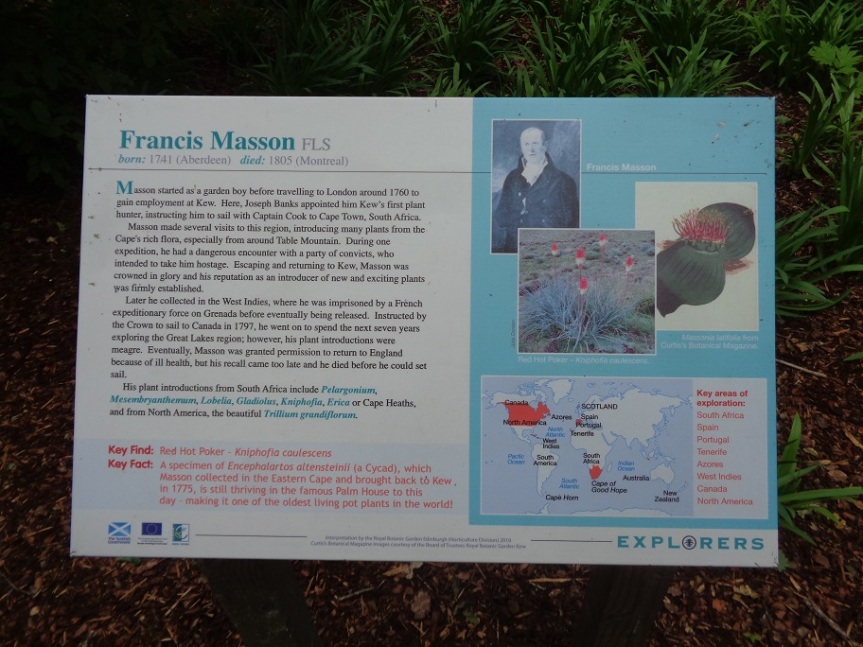
Beyond this is North America and David Douglas (among others) – one of the few really recognisable flowers here, the lupins which famously ended up washed down the Spey, and a lovely carved pine cone (although I don’t think it’s Douglas fir – it doesn’t have the little tongues!)
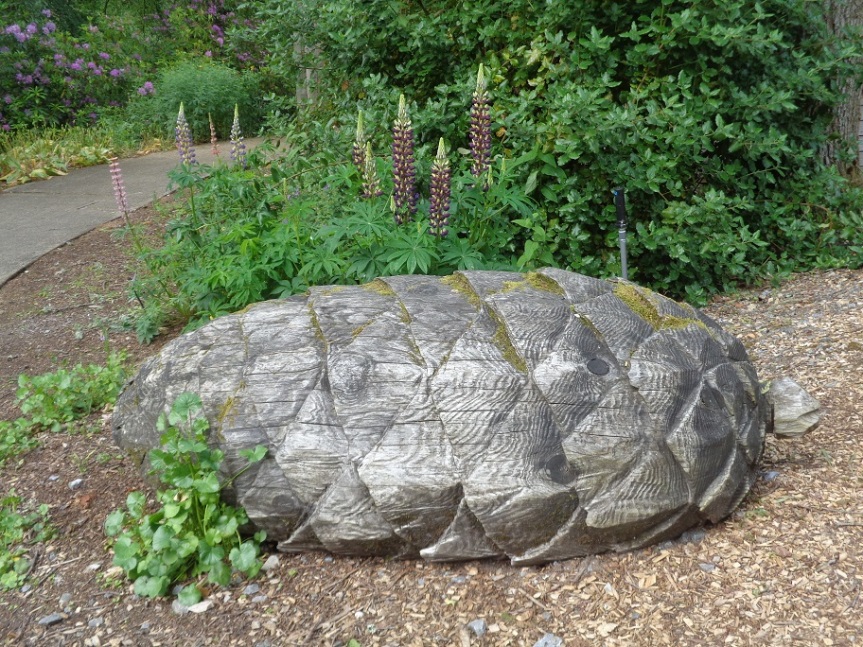
The pavilion itself I found a bit of a disappointment – it’s a nice building to put a little exhibition in – photos from a recent trip to China at the moment – but as a monument I much preferred the little pavilion at Scone.
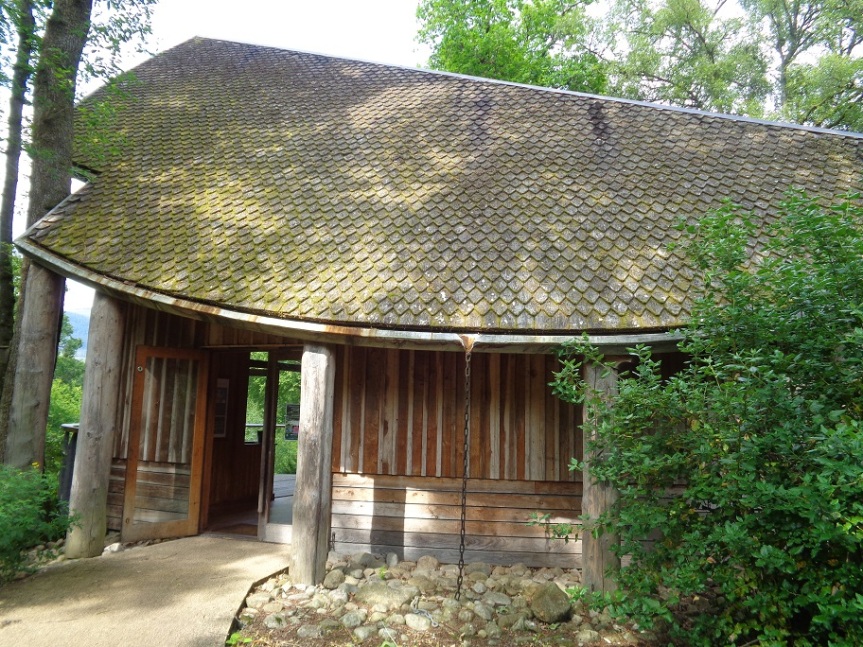
The focus here is mostly on forestry – the place is built from different woods grown in Scotland, mainly Douglas fir, larch and oak, and the information on Douglas is mostly about trees.
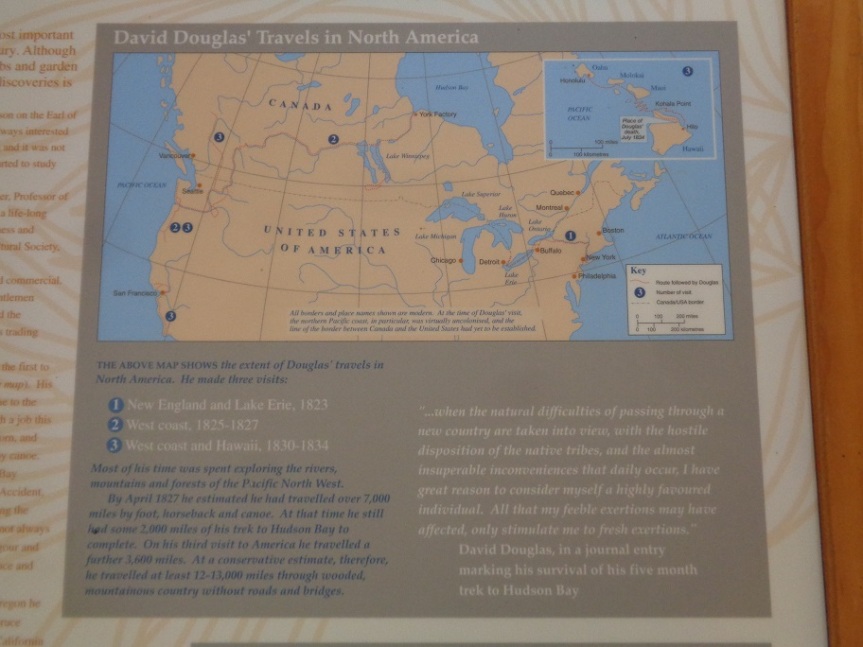
I did like that the pavilion appeared to have produced a cub – which was the toilet!
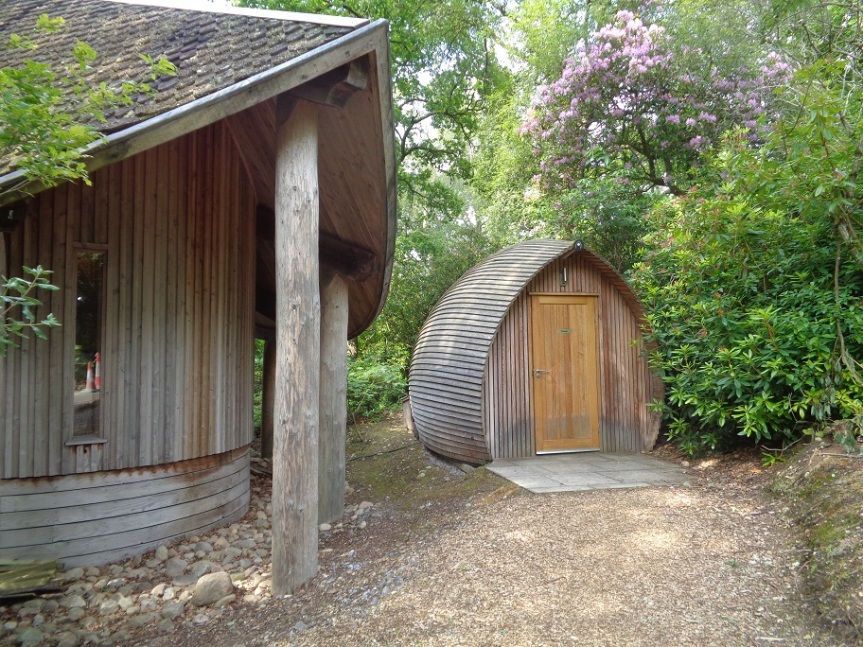
Beyond that the focus moves to the Himalayas and Japan – some of the more interesting parts of the garden, with a lovely round stone ‘moon gate’, and the meconopis which is a speciality of the garden, but based mainly on 20th century exploration, rather than looking back to the true Age of Sail. I did like the George Forest pavilion, which was far more striking as a memorial.
